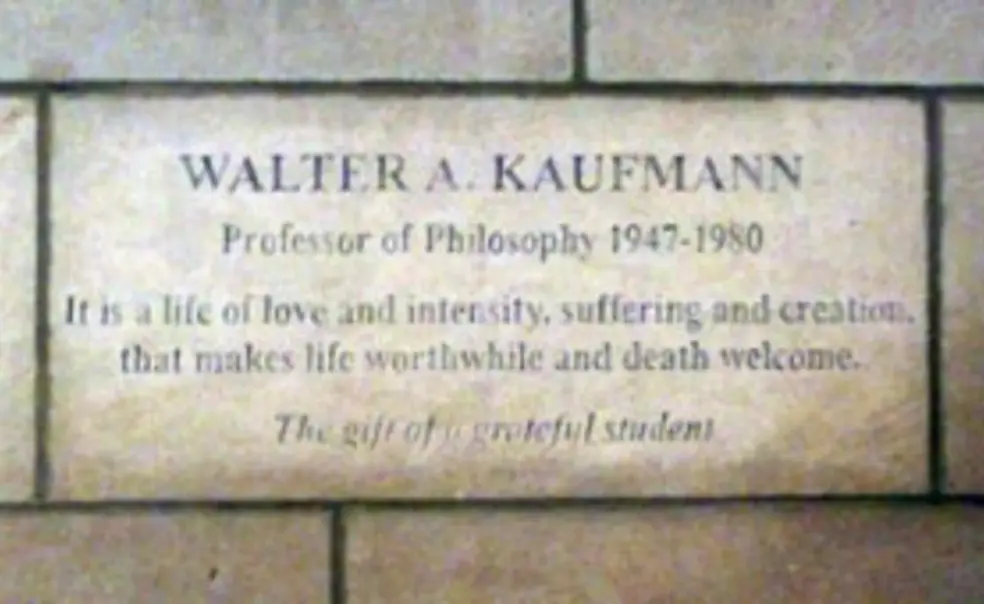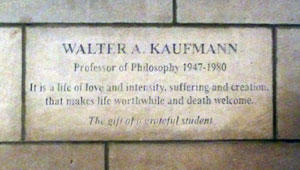Grateful student adds a memorial for Kaufmann to Chapel wall
With thousands of alumni and family members on campus for Alumni Day Feb. 23, it would have been easy to overlook the 18 people meeting in the shadows of the University Chapel after the Service of Remembrance. But for Richard Chrisman ’65, that small gathering was the highlight of his day.
The group was there to honor the late philosophy professor Walter Kaufmann, best known as an authority on Nietzsche who translated the philosopher’s works and revived his reputation in the decades following World War II.
As an undergraduate, Chrisman took two courses from Kaufmann and audited a third. He was struck by the professor’s extraordinary knowledge as well as his engaging style. “It was personal with him,” Chrisman said. “This is not a philosopher who labored in the forest of abstract reasoning for the sake of some abstract truth.”
Years later, after attending divinity school and entering the ministry, Chrisman came to realize how deeply Kaufmann had influenced him — he calls the professor a “spiritual father.” He wanted to make a lasting memorial to Kaufmann, and mentioned the plan last year in an open letter published by PAW.
About 25 alumni sent supportive replies. Some wondered if Chrisman’s proposed location in the Chapel was appropriate for a memorial to Kaufmann, who was a critic of conventional religion and a self-proclaimed atheist. But Chrisman, a former assistant dean of the chapel at Princeton who now serves as director of religious and spiritual life at Skidmore College, said that doubt and critical analysis have “a proper place” in the Chapel. He also noted that Kaufmann wrote extensively on religion and published a book about world religions a few years before his death in 1980 at age 59.
When Chrisman and the group of Kaufmann’s former students, colleagues, and friends dedicated the memorial stone on Alumni Day, they took turns sharing memories of the late professor. Nearly everyone had something to say, according to Chrisman.
The stone, below a bay of stained-glass windows featuring images of Plato, Aristotle, Descartes, and other philosophers, bears an inscription from Kaufmann’s 1961 book The Faith of a Heretic:
“It is a life of love and intensity, suffering and creation, that makes life worthwhile and death welcome.”













No responses yet